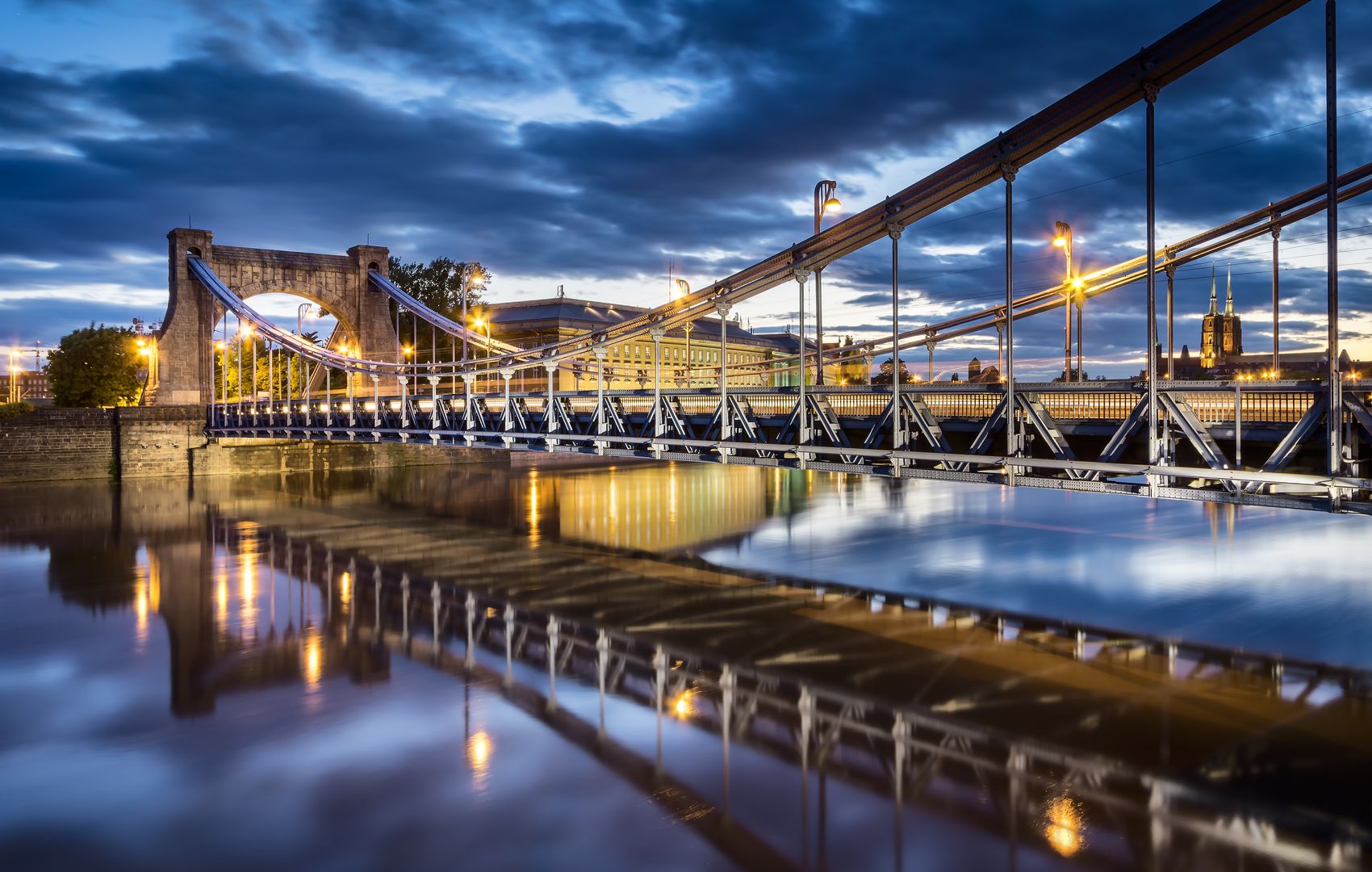Grunwaldzki Bridge in Wrocław
6.12

Overview
The Grunwaldzki Bridge in Wrocław is a steel suspension structure spanning the Oder River, known for its riveted framework. It was designed as part of a route connecting the city center with its eastern districts. The bridge stretches 112.5 meters in length and 18 meters in width, supported by pylons approximately 20 meters high. Initially named the Kaiserbrücke (Imperial Bridge), it was renamed Freiheitsbrücke (Freedom Bridge) in 1919 before adopting its current name in 1947. Designed in 1904 by architect Martin Mayer and engineer Robert Weyrauch, construction was completed in 1910. Although Emperor Wilhelm II was absent at its opening, the bridge quickly gained recognition as a vital transport link. During World War II, the structure suffered damage, and German forces attempted to save it by lowering the pylon. After the war, the bridge underwent complex reconstruction, finalized in 1947. Over the years, it has seen numerous upgrades, including road surface and tram track replacements. Today, it serves as a key transit route not only for cars but also trams and cyclists. The bridge gained cinematic fame through the film "80 Million." An interesting fact: despite severe wartime damage, it remained in use until 1946, when it was closed for repairs. Today, the Grunwaldzki Bridge stands not only as a crucial transport artery but also as a symbol of Wrocław's history, reflecting the region’s evolving architecture and culture.
Location
Tickets
Powered by GetYourGuide
2025 Wizytor | All Rights Reserved